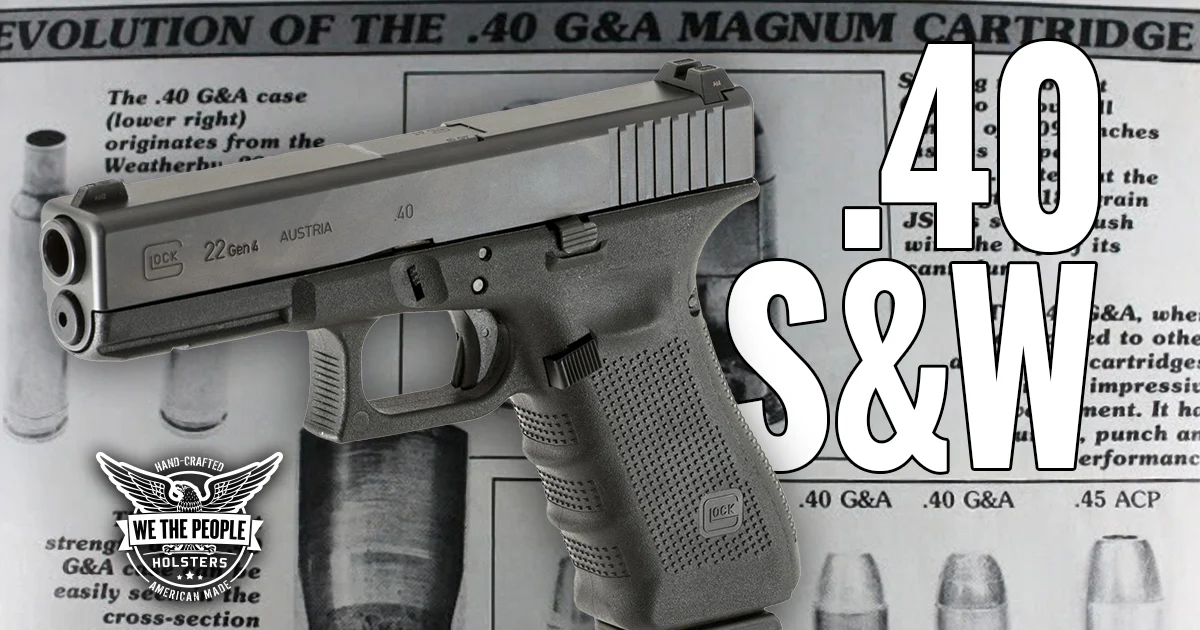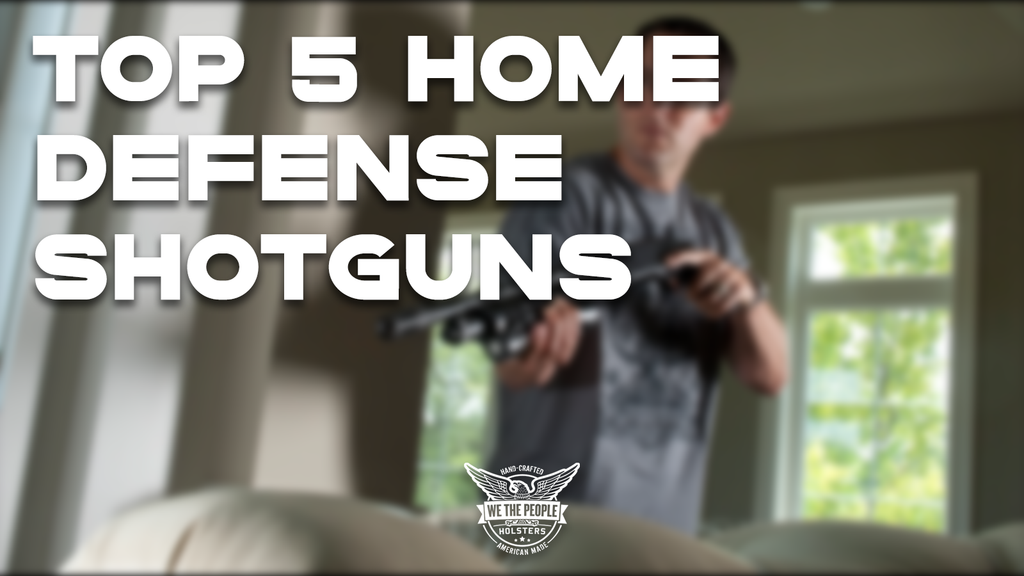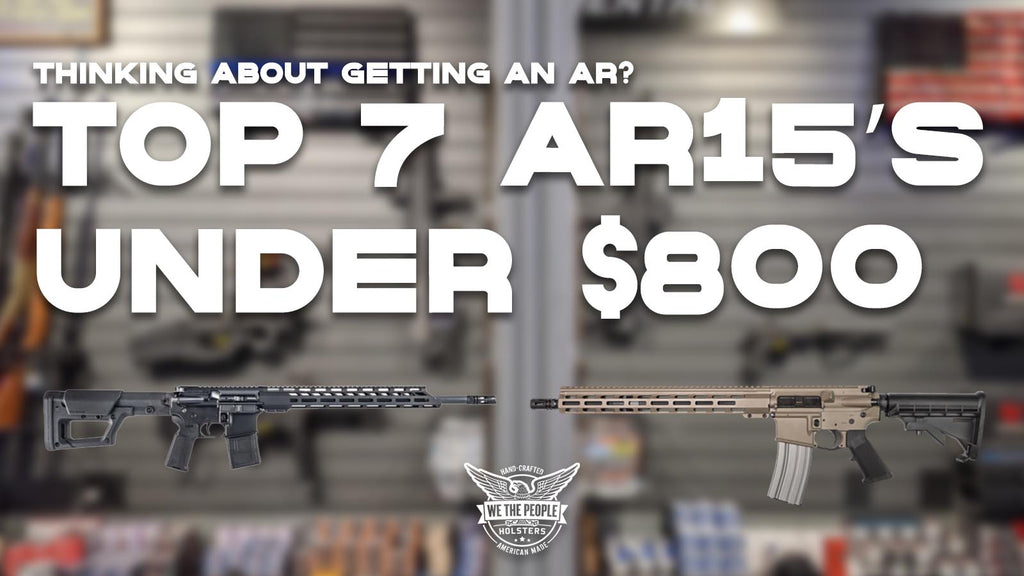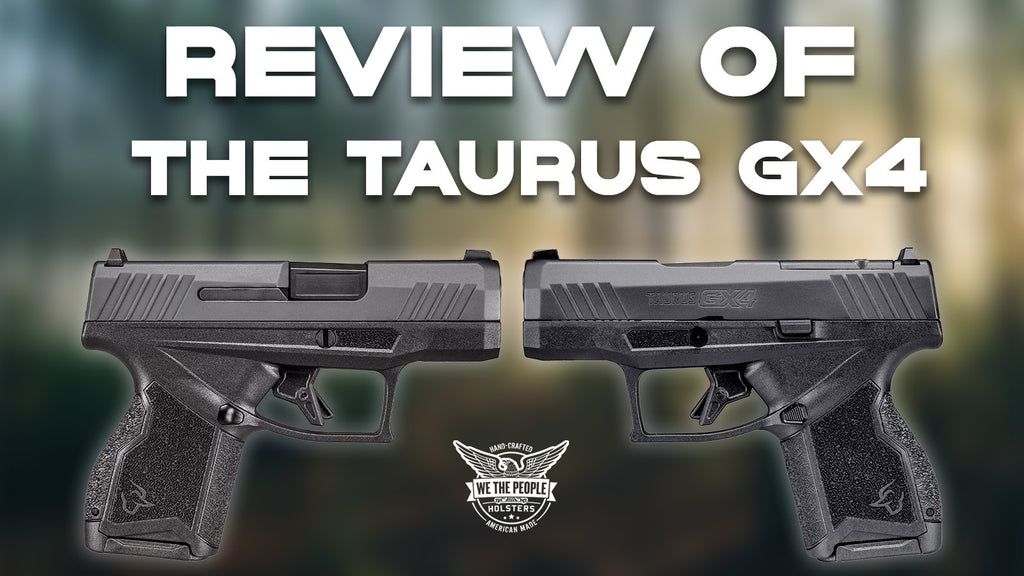The .40 S&W is a versatile cartridge that delivers a balance between magazine capacity and power. In 1994, the company introduced its Sigma line of handguns as a competitor to Glock. Among these weapons is the .40 caliber SW40F — SW40 for Smith & Wesson 40 and “F” for “full size” — the precursor to the M&P.
.40 G&A and 10mm

You can trace the history of the .40 S&W cartridge to the .40 G&A (Guns & Ammo). In 1965, George Nonte, gun writer, firearms enthusiast, and handloading expert, developed a wildcat cartridge based on the then-new .41 Magnum.
Nonte reduced the case length and rebated the rim for use in semi-automatic pistols. An associate editor at Guns & Ammo, Whit Collins, drew inspiration from Nonte and began designing a .40-caliber cartridge based on the .30 Remington rifle case loaded with a 180-grain .38-40 Winchester bullet.
Collins created drawings and dummy cartridges for the new round and approached Col. Jeff Cooper for support with the project. Master gunsmith John French modified a Browning Hi-Power to fire the new cartridge, designated the .40 G&A.
While Collins proceeded with the .40 G&A, Jeff Cooper began working on a separate project: the .40 Super. The cartridge would use a longer cartridge case, which held more powder. In the early 1980s, Jeff Cooper began collaborating with Thomas Dornaus and Michael Dixon on a semi-automatic pistol and cartridge that would exceed the power of the .45 ACP and .357 Magnum.

In 1983, Dornaus & Dixon introduced the Bren Ten. The new semi-automatic pistol was prominently depicted as the sidearm of Sonny Crocket in Miami Vice, and the pistol’s popularity soared. Unfortunately, due to production setbacks and a high retail price, the company declared bankruptcy three years later, producing 1,500 pistols.
FBI Miami Shootout

In the wake of the infamous FBI Miami shootout in April 1986, two special agents lay dead, and five were severely wounded. The Bureau investigated and determined that the issued weapons and ammunition were inadequate. While some special agents were armed with 9mm semi-automatic pistols, most carried .38 Special and .357 Magnum revolvers.
The FBI concluded that the failure of FBI-issued ammunition to perform contributed to the loss of life. Special Agent Dove, one of those killed in the gun battle, had perfectly placed his shot on one of the perpetrators, Platt. However, the bullet did not penetrate sufficiently to inflict an incapacitating wound, and Platt remained in the fight.
The FBI Changes Course
In September 1987, the FBI Academy Weapons Advisory Committee evaluated several semi-automatic pistols in 9mm and .45 ACP for issuance to FBI SWAT teams and Special Operations Groups.
To settle the question of caliber, the Committee sought outside expertise and invited several recognized authorities to participate in a three-day Wound Ballistics Workshop.
In 1988, the FBI Firearms Training Unit (FTU) determined that the 10mm Auto cartridge could solve the 9mm vs. .45 ACP controversy and began testing the new round. However, although 10mm Auto round’s performance was more than satisfactory, the FTU’s concluded that commercially available full-power loads were not practical for training purposes.
FTU personnel developed hand-loaded ammunition to achieve the desired effect in a reduced-pressure cartridge. The FBI contracted the Federal Cartridge Corporation to manufacture a load to its specifications.
This new load consists of a 180-grain Sierra bullet at approximately 950 ft/s. The FBI asked Smith & Wesson to design a new pistol to its specifications that could cycle the attenuated 10mm load reliably.
Smith & Wesson Develops a New Pistol and Caliber

Smith & Wesson designed the model 1076 pistol based on its existing .45-caliber model 4506 gun in response to the FBI’s request. In developing the weapon, the company’s engineers determined they could replicate the performance of the FBI load in a cartridge with a shorter case.
Removal of the airspace in the cartridge allowed the case length to be reduced from 25.20 mm (0.992”) to 21.6 mm (0.850”) and the overall length lowered from 32 mm (1.260”) to 28.8 mm (1.135”).
The result was a cartridge more adaptable to the medium-size frames of 9mm semi-automatic pistols. In many modern combat handguns, the weight and dimensions of 9mm and .40 caliber variants are similar or identical, allowing for holster interchangeability.
.40 S&W Makes its Debut
On January 17, 1990, the .40 S&W cartridge, and the Smith & Wesson Model 4006 semi-automatic pistol, debuted in the United States. However, the new Smith & Wesson handgun would not be the first 40 caliber handgun to hit the market.

Instead, the Austrian firm Glock won the race, introducing two new handguns: The full-size Glock 22 (fed from a 15-round magazine) and the compact Glock 23 (fed from a 13-round magazine). During that decade, the .40 S&W would gain a loyal following among American law enforcement.
The .40 S&W cartridge is a compromise. Compared with .45 ACP handguns, .40-caliber pistols generally have higher magazine capacities and more compact frames. To appeal to those who prefer bullet size and energy, .40 S&W loads typically use bullets weighing 155, 165, or 180 grains — more than the 9mm.
In 1997, the FBI adopted the .40-caliber Glock 22 and G23 pistols, replacing its steel-framed Smith & Wesson handguns. It’s not difficult to understand why. The full-size Glock 22, with a loaded magazine, weighs less (34.39 oz.) than an empty Model 1076 (36 oz.).
Smith & Wesson Sigma
Before Smith & Wesson introduced its M&P series of polymer-framed, striker-fired handguns, the company launched the Sigma in the mid-1990s.

Glock determined that Sigma too closely resembled its design and filed a lawsuit against Smith & Wesson. Smith & Wesson altered the Sigma to settle the lawsuit, developing new variants.
If you own one of the newer Smith & Wesson Sigma pistols — e.g., the SD40 VE (Value Enhanced) — you’ll need a dedicated IWB or OWB holster.
.40 S&W Shoulder Weapons
The new 40 cal round wasn’t limited to handguns. In 1992, Heckler & Koch introduced the MP5/10 (in 10mm Auto) and MP5/40 (in .40 S&W) submachine guns for use by law enforcement. Both weapons are fed from vertical 30-round translucent magazines, and feature bolt catches — a U.S.-specific modification.

Ruger introduced its blowback-operated PC Carbine in 1996, chambered in 9mm and .40 S&W on the commercial market.
Since the turn of the century, manufacturers have developed a variety of AR-15-pattern pistols and carbines chambered in .40 S&W for home defense.
Practice is Critical
Some shooters find compact and subcompact handguns chambered in .40 S&W and .45 ACP more challenging to control than similarly sized pistols in 9mm. To ensure you can shoot your .40-caliber concealed carry pistol accurately, you must practice with it regularly. For low-cost range practice, you can download and print your own targets from our website.
Find the Best Holster for Your .40 S&W Handgun
At We the People Holsters, we carry IWB and OWB holsters, in both leather and Kydex, for a multitude of .40-caliber handguns.
We cover all major brands from Glock, Smith & Wesson, HK, and Ruger to SIG Sauer and Taurus.
Take a look at our inventory and find the best match for your daily concealed or open carry needs.





